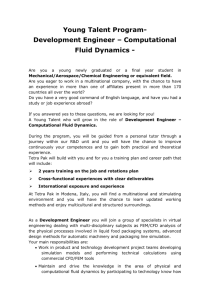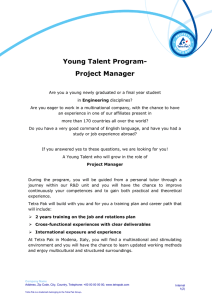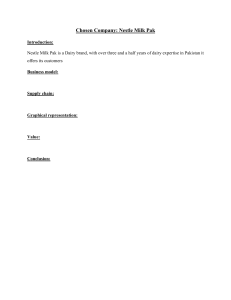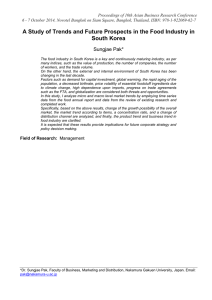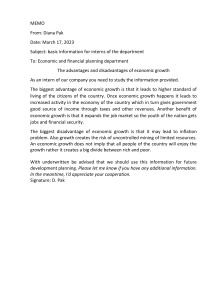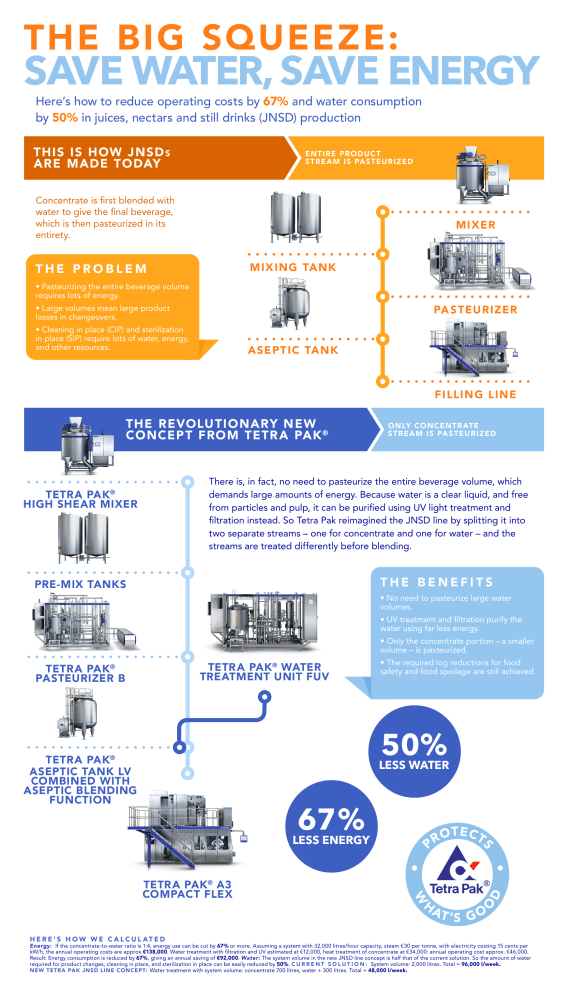
THE B IG SQUEEZE: SAVE WATER, SAVE ENERGY Here’s how to reduce operating costs by 67% and water consumption by 50% in juices, nectars and still drinks (JNSD) production THIS IS HOW J NSD s ARE MADE TODAY E NTI R E PRO DUC T S TR E A M I S PA S TEU R I Z E D Concentrate is first blended with water to give the final beverage, which is then pasteurized in its entirety. Tetra Pak® High MShear IXERMixer Mixing tanks M IXI NG TANK THE PROBLEM • Pasteurizing the entire beverage volume requires lots of energy. Tetra Pak® B PA SPasteurizer TEUR I ZER • Large volumes mean large product losses in changeovers. • Cleaning in place (CIP) and sterilization in place (SIP) require lots of water, energy, and other resources. Tetra Pak® Aseptic tank VD A SEP TI C TANK Tetra Pak® A3 Compact Flex FILLI NG LI NE THE REVOLUTI ONARY NEW CONCEP T FROM TETR A PAK ® Tetra Pak® ® High Shear Mixer TETRA PAK HIGH SHEAR MIXER O N LY CO N CE NTR ATE S TR E A M I S PA S TEU R I Z E D There is, in fact, no need to pasteurize the entire beverage volume, which demands large amounts of energy. Because water is a clear liquid, and free from particles and pulp, it can be purified using UV light treatment and filtration instead. So Tetra Pak reimagined the JNSD line by splitting it into two separate streams – one for concentrate and one for water – and the streams are treated differently before blending. Mixing tanks THE BENEFITS PRE-MIX TANKS • No need to pasteurize large water volumes. • UV treatment and filtration purify the water using far less energy. Tetra Pak® TETRA PAK Pasteurizer B® PASTEURIZER B • Only the concentrate portion – a smaller volume – is pasteurized. Water treatment UV + filter ® TETRA PAKunit WATER TREATMENT UNIT FUV • The required log reductions for food safety and food spoilage are still achieved. 50% Tetra Pak® Aseptic tank VD TETRA PAK ASEPTIC TANK LV COMBINED WITH ASEPTIC BLENDING FUNCTION ® LESS WATER 67% LESS ENERGY ® A3 ® Tetra Pak TETRA PAK A3 Compact Flex COMPACT FLEX H E R E ’ S H O W W E C A L C U L AT E D Energy: : If the concentrate-to-water ratio is 1:4, energy use can be cut by 67% or more. Assuming a system with 32,000 litres/hour capacity, steam €30 per tonne, with electricity costing 15 cents per kW/h, the annual operating costs are approx €138,000. Water treatment with filtration and UV estimated at €12,000, heat treatment of concentrate at €34,000: annual operating cost approx. €46,000. Result: Energy consumption is reduced by 67%, giving an annual saving of €92,000. Water: The system volume in the new JNSD line concept is half that of the current solution. So the amount of water required for product changes, cleaning in place, and sterilization in place can be easily reduced by 50%. C U R R E N T S O L U T I O N : System volume: 2,000 litres. Total = 96,000 l/week. NEW TETR A PAK JNSD LINE CONCEPT: Water treatment with system volume: concentrate 700 litres, water + 300 litres. Total = 48,000 l/week.
